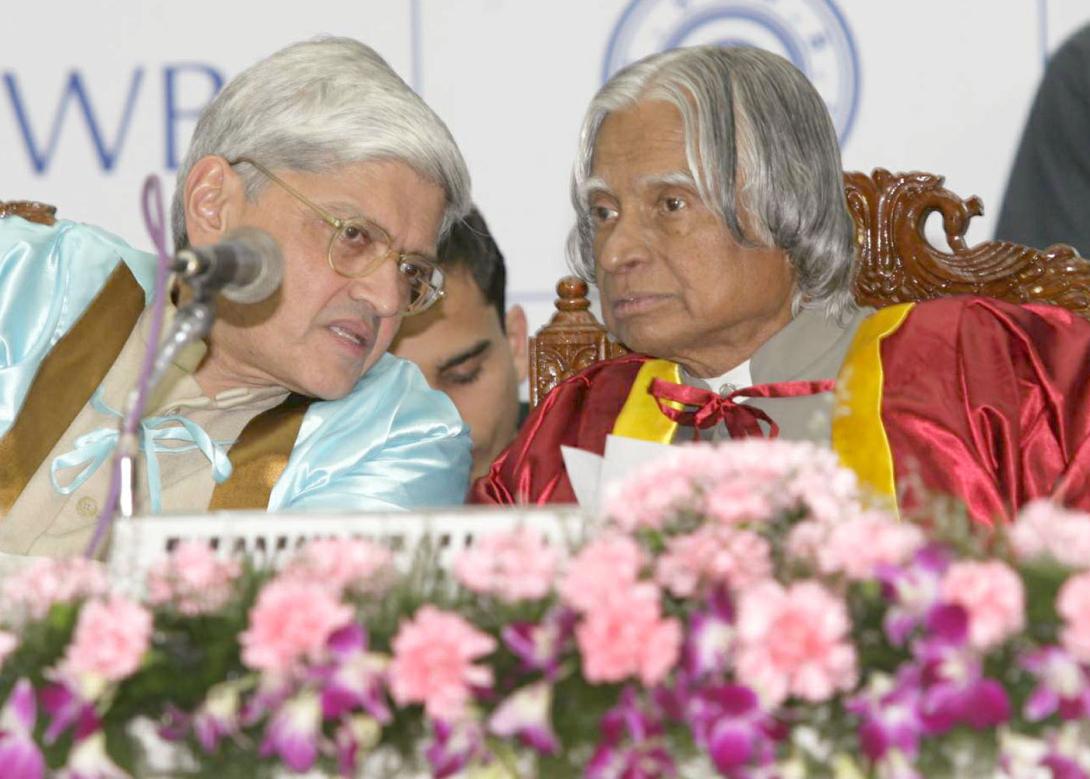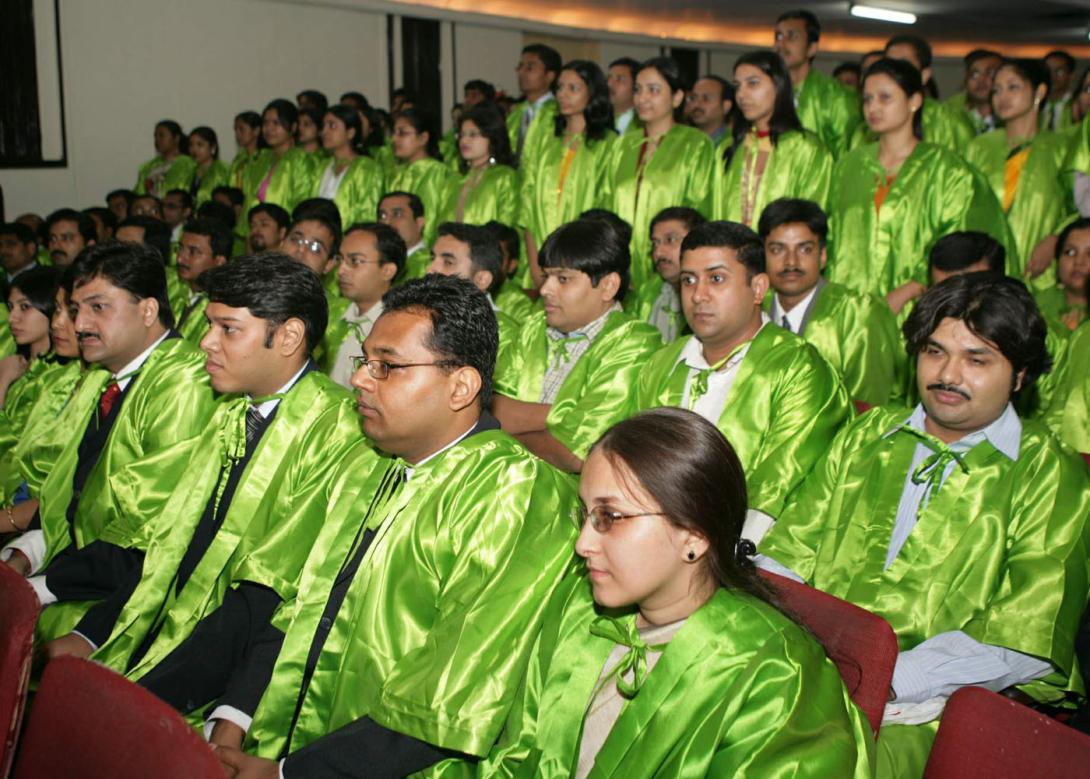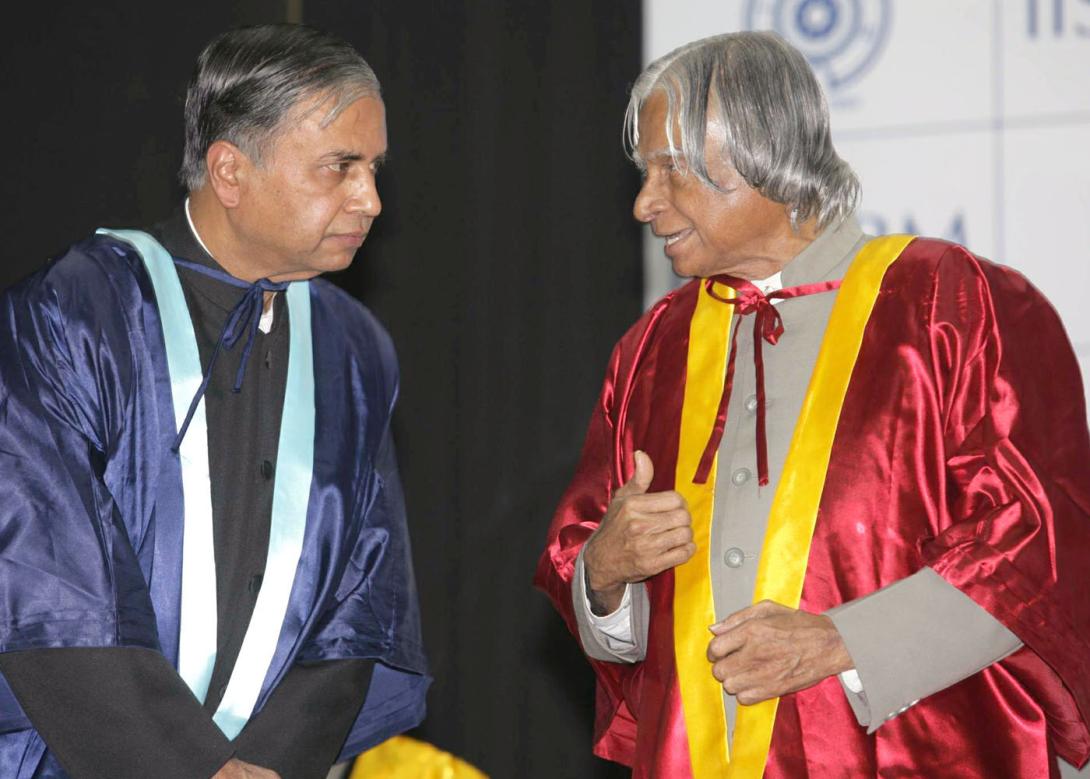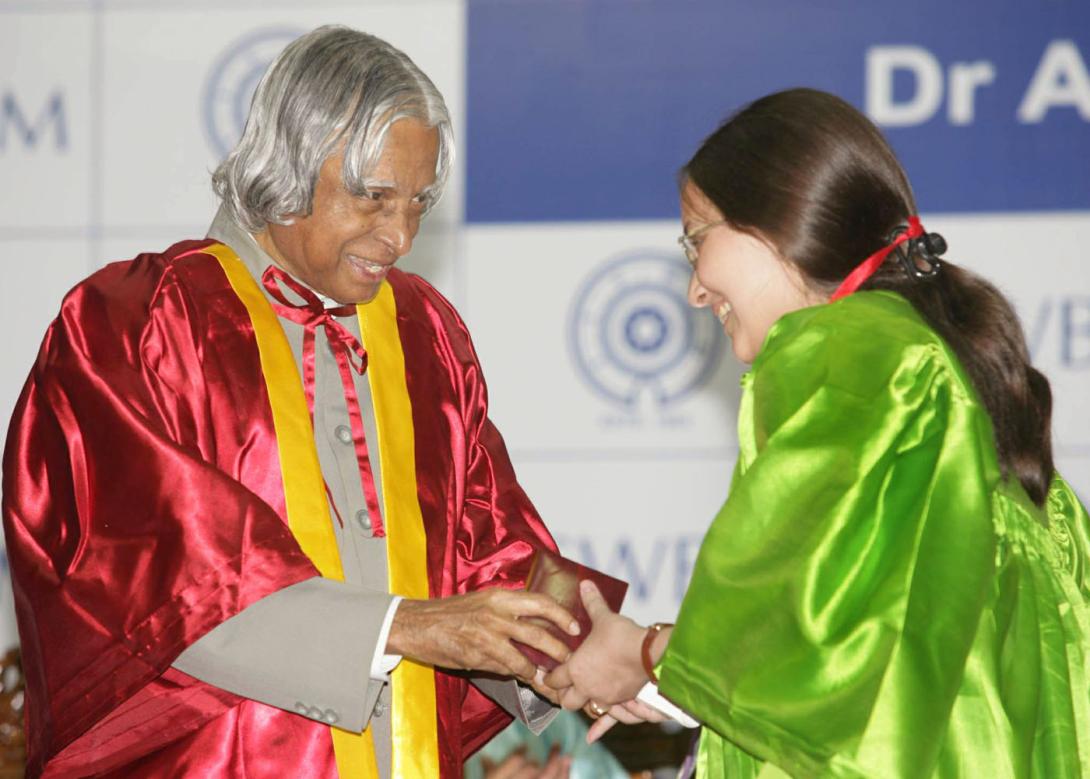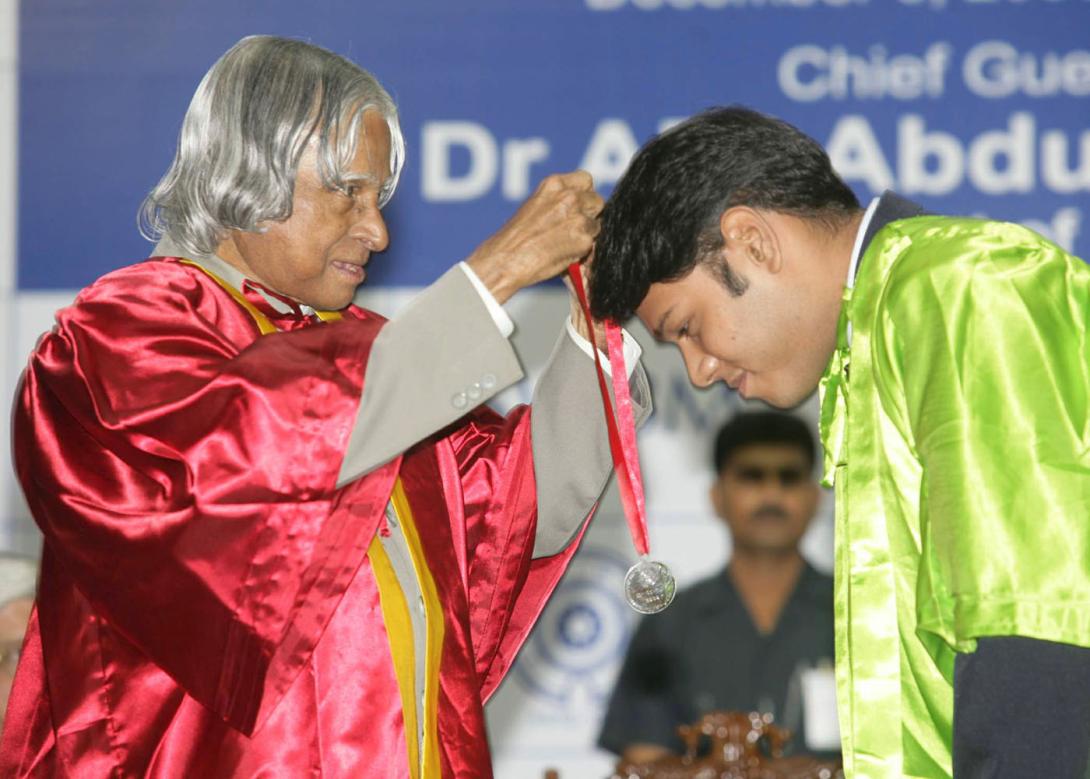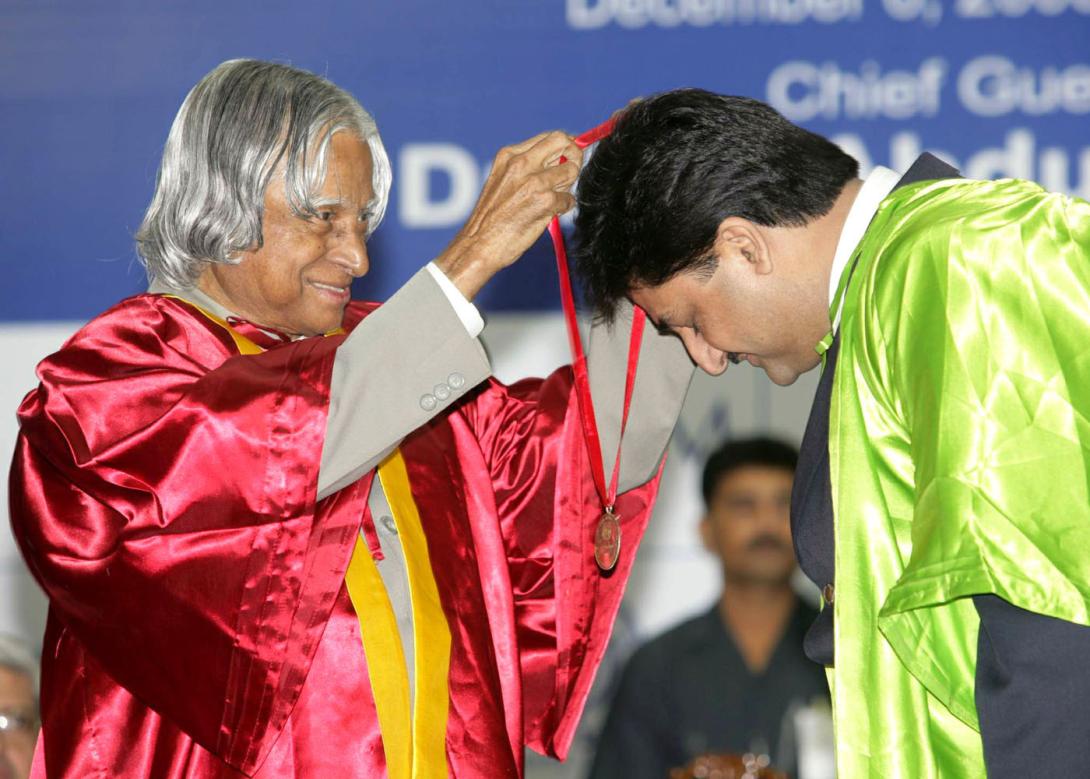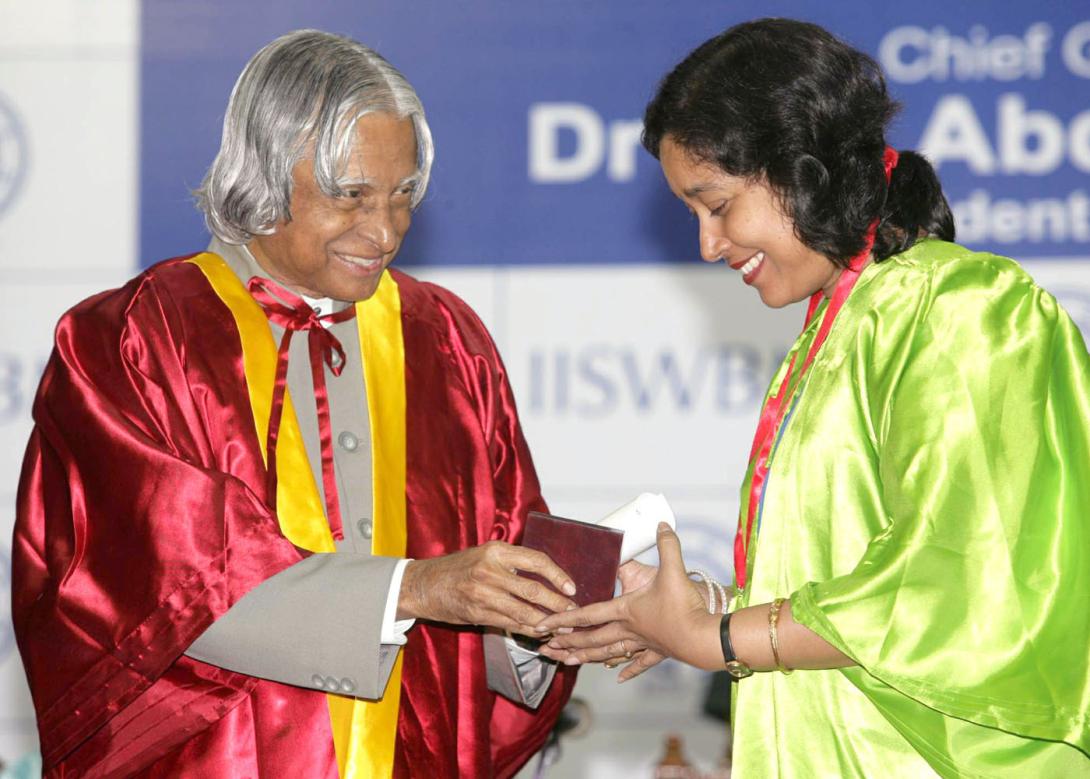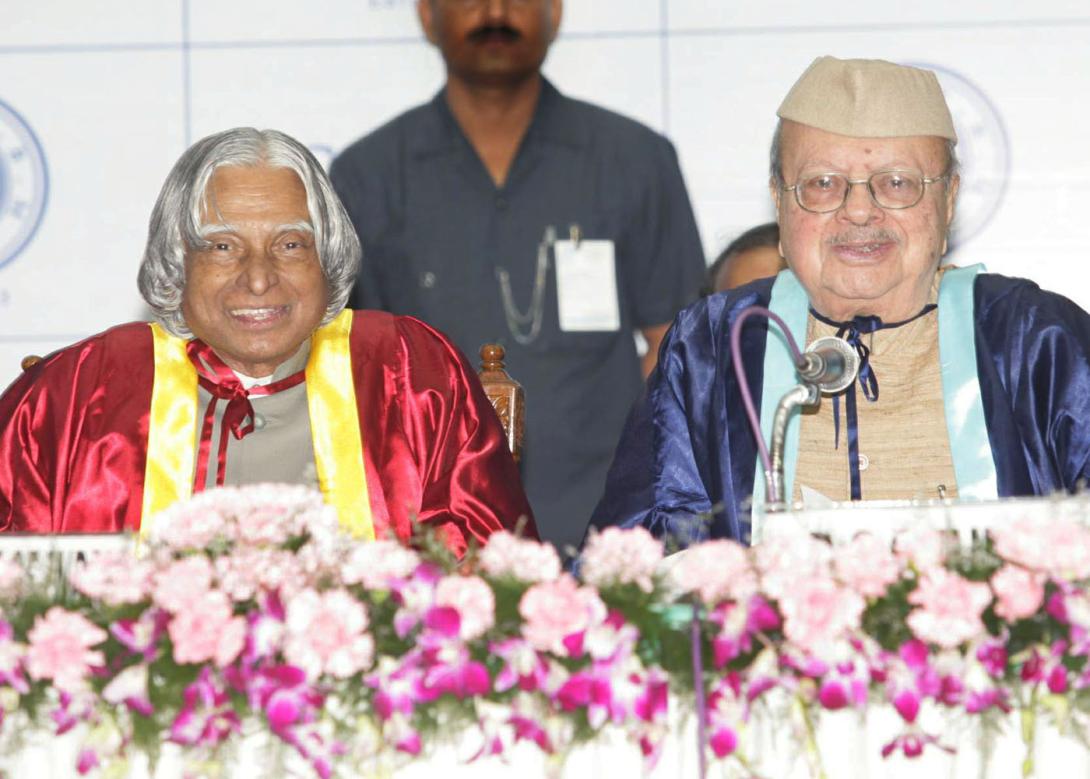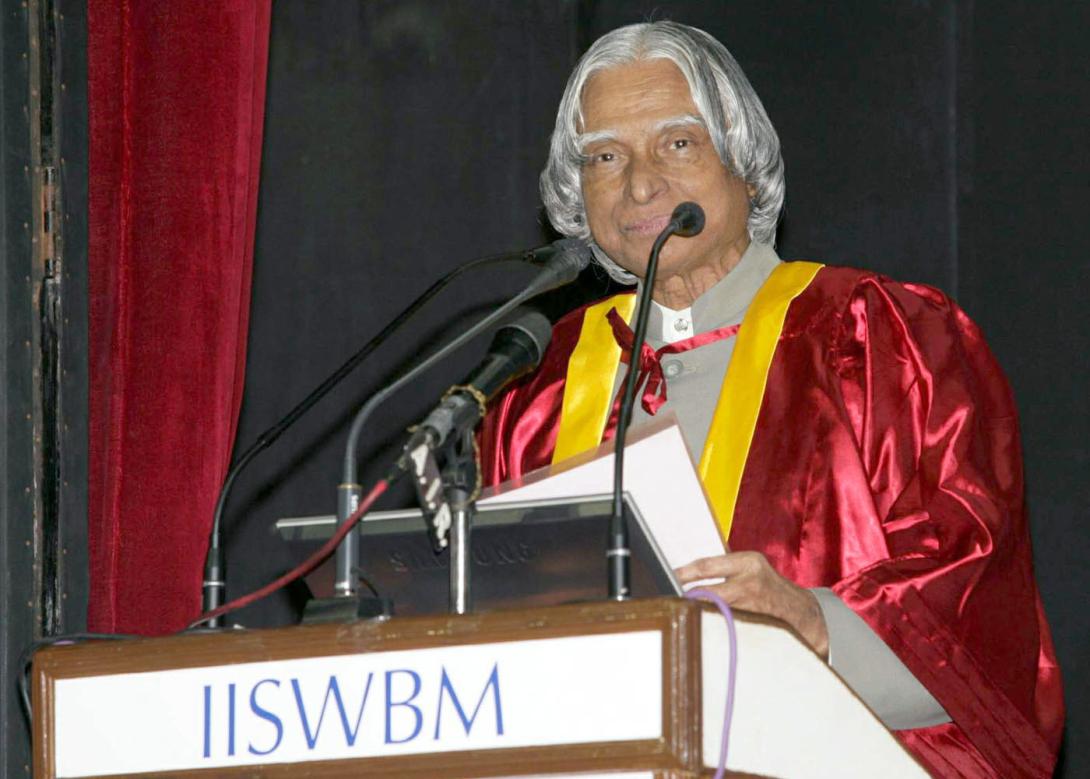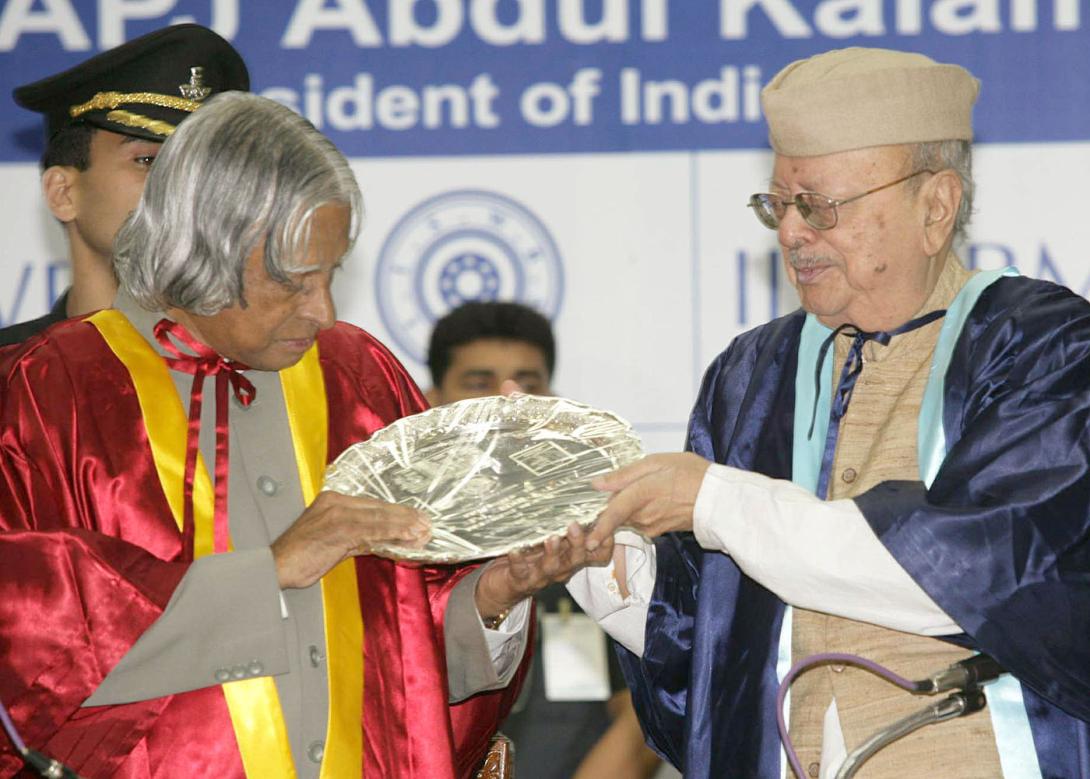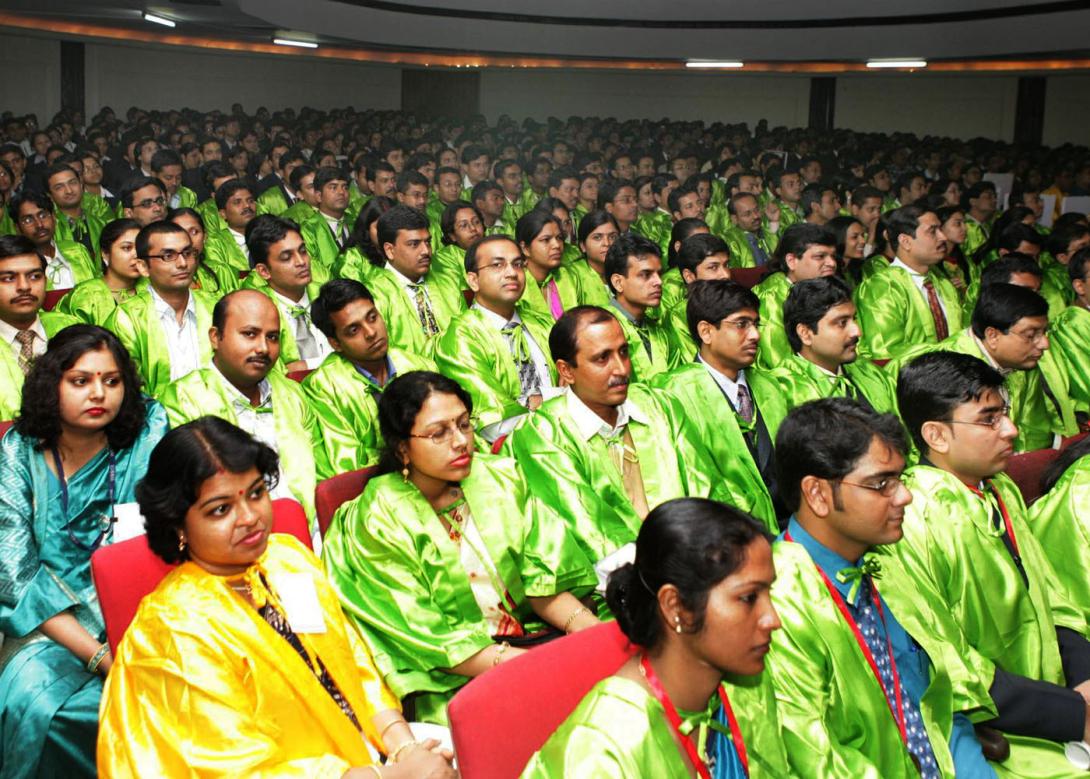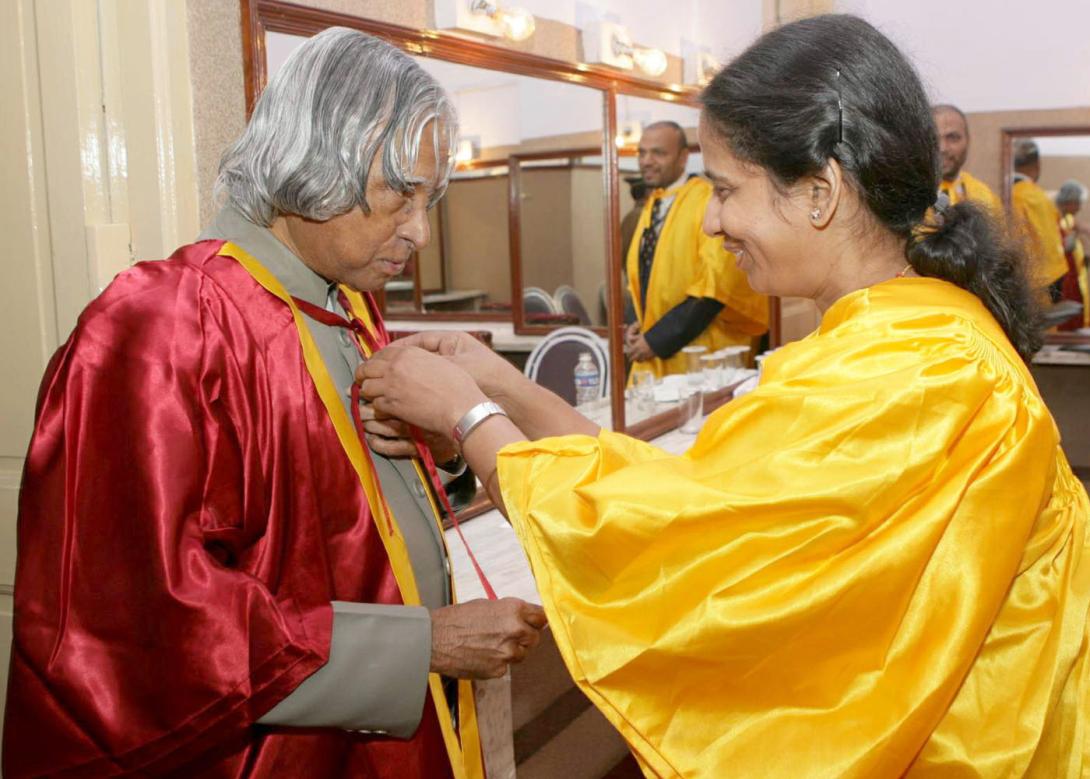Address at the Convocation of the Indian Institute of Social Welfare and Business Management, Kolkata
Kolkata : 06-12-2006
Empowering Youth for Economic Development
Competitiveness has three dimensions:
Cost effectiveness, quality and just in time delivery?
I am indeed delighted to participate in the Convocation of the Indian Institute of Social Welfare and Business Management (IISWBM). I am happy to note that IISWBM is creating a pool of social science specialists and entrepreneurs with a spirit for rural development and creating small and medium enterprises in West Bengal and other parts of the country. My congratulations to all graduating students and greetings to Faculty Members and support staff for their contribution in shaping young minds. During the last five decades this institute has generated over 12,000 graduates in social welfare and business management who have taken up important assignments in social work and industry. In the years to come, I am confident that this institute will generate a large number of societal transformers and entrepreneurs with the object of promoting economic development in the country, particularly in the rural sector.
Contribution of Small Entrepreneurs
Friends, I have so far visited all states and Union Territories. Various children have shared with me what their goals are and their aims and dreams. Ninety percent of the children tell me they want to become engineers, doctors, scientists, lawyers, administrators, judges and few of them say that they want to become politicians. Only in a few states children say they want to become entrepreneurs. This emphasizes the need for creating an aptitude among children for taking up entrepreneurship which will enable them to become employment providers rather than employment seekers. In this situation, it is a good mission to transform as many youth as possible as young entrepreneurs. I congratulate the IISWBM for contributing in this direction during the last five decades.
Generation of entrepreneurs through MBA Programmes is important. Moreover, many people have chosen entrepreneurial careers, because they seem to offer greater economic and psychological rewards than the large company route. Recent experiences indicate that the economic progress of few countries particularly developed countries is due to the contribution of large number of small entrepreneurs employing less than 50 persons in their establishments. We need such entrepreneurs in large numbers in our country for developing and transforming our village clusters into sustainable economic units.
Development of Societal transformers and Entrepreneurs
The key characteristics required for a societal transformer and entrepreneur are desire, drive, discipline and determination. I am confident that this institute will promote the following important traits among their students:-
(a) Vision and pioneering spirit
(b) Being able to see possibilities where others do not,
(c) Always searching for new opportunities and challenges,
(d) Being creative - 'able to think out of the box',
(e) Constantly striving to do things better,
(f) Confident about taking risks,
(g) Proactive and focused on the future,
(h) A good knowledge and skill base.
Now, I would like to discuss some important programme management tasks such as importance of acknowledging contributions of team members, Law of Development, total quality management and collective wisdom.
Importance of acknowledging contributions made by Team Members
I would like to recall an event, which took place in 1995. We were having the Light Combat Aircraft (LCA) roll out at the HAL Bangalore campus. To my surprise I found that the most important person who was the lifeline of the programme was sitting in the first row. I did not know why he was sitting there. During my welcome address I started describing Dr. Kota Harinarayana?s contribution in the development of the LCA. I called him up to the dais and gave my chair. Immediately they brought another chair for him. There was a big cheer from the crowd, since all of them acknowledged the contribution of Dr. Kota Harinarayana to the programme.
Now, I would like to describe my experience while working on the design project of the fourth stage apogee motor. During Dr. Sarabhai?s time, Dr. Muthunayagam was the Design Project Leader for the third stage. Dr. M.R. Kurup was the Design Project Leader for the second stage. Dr. Gowarikar was the Design Project Leader for the first stage. Dr. Gupta was the Design Project Leader for the guidance system. Prof. U.R. Rao was the Design Project Leader for the Rohini Satellite. I was the Design Project Leader for the fourth stage and the heat shield. Dr. Vikram Sarabhai carried out the review. Normally he used to invite experts from academic institutions for such reviews, since it was the design phase. For this review, he had invited Prof. I.G. Sharma, a well-known Guidance and Control System and Simulation Expert, Prof Narashima for aerodynamic design and atmospheric sciences, Prof. Mahapatra for the radar system and Prof. K.A.V. Pandalai, for aerospace structure. Every project leader gave a presentation on the progress and problems relating to their task. Finally when my turn came, I gave a three-minute presentation on the overall status of the project. Later, I asked Shri Sudhakar, System Designer, Shri Sathya, Composite Products Engineer, Shri Abdul Majid, Aerospace Mechanism Engineer and Shri Namboodiri, Rocket Motor Designer to give short presentations on the progress of the sub-system design. When my team completed the presentation, discussion time came. Many technical and managerial questions were asked. I answered them. At that stage there was a question from an experienced scientist. ?Mr. Kalam, I saw the presentation from your Team one after the other. What have you done?? How to answer this question? I was trying to frame the answer. Dr. Vikram Sarabhai said Mr. so and so what Kalam did is indeed project management. That is what I would like to hear from the people who have actually carried out the task. Friends, project management demands that the project team must be able to get things done from different people and different institutions. People who contribute to the project should know that they are very important for the project, and they are remembered. Now, I would like to discuss the Law of Development and Competitiveness.
Law of development
How to become competitive? I was studying development patterns and the dynamics of connectivity between nations, especially in trade and business. As you all know, the world has a few developed countries and many developing countries. What is the dynamics between them and what connects them? A developed country has to market its products in a competitive way to different countries to remain as a developed country. A developing country on the other hand to get transformed into developed country; also has to market its products in other countries in a competitive way. Competitiveness is the common factor for both developing and developed nations. Competitiveness has three dimensions: quality of the product, cost effectiveness and supply in time. Indeed, this dynamics of competitiveness in marketing of products by developing and developed countries determines the Law of Development.
Total Quality Management
I have participated in many space and defence programmes. Putting a satellite in orbit needs a large rocket system. The rocket system and the satellite put together will have at least 50 sub-systems and more than 80 thousand components mechanical, electrical and chemical. To put a satellite in orbit all the systems have to work to their rated performance requirements. Even if one sub-system or one component fails, the mission will be a failure. The spacecraft, which has been launched, has to work in space for over 10 years without any failure. The same is also true with the launching of missile systems. It has to reach the required target by flying thousands of kilometers. The message I would like to convey here is that, those responsible for executing the programme have to learn that the quality of a product has to be built in during the design phase and carried forward till the test phase. It has to be constantly improved. The man who designs and manufacturers must love what he does. The graduates and post graduates from this institute have to aim for total quality management, that is quality design to production, testing leading to market. So this will ensure success of the product and the system. I am sure that the IISWBM will impart this lesson with real life experiences so that the graduates succeed in their mission from the beginning.
Collective Wisdom
I read a book in which a methodology is described for solving a complex problem pertaining to a lost submarine. The book describes how the management held a meeting with four experts who made certain suggestions. When the search was made using these suggestions no positive result was found. Then the top management decided to call a meeting of all the 40 people from multiple disciplines for working out a comprehensive search process. All the 40 members were asked to give one mutually exclusive suggestion for progressing towards the search. The resultant 40 suggestions gave five alternatives. Based on these five alternatives, parallel teams were deployed to carry out the search process. This finally lead to the detection of the missing submarine. This type of problem solving technique is being followed in our Indian institutions like ISRO and DRDO, where the programme review meetings are attended by specialists in multi-disciplines leading to precise determination of the problem area and finding satisfactory solutions. The message for graduating students from this institution is that they have to keep their eyes and ears open and try to seek guidance from all possible avenues for solving organizational problems. Now I would like to talk to you about rural development enterprise programmges which can be taken up by the Indian Institute of Social Welfare and Business Management.
Rural Development Enterprise
The total number of villages in West Bengal are over 37,000 with a population of over 8 crore based on the 2001 census. Development of these rural areas will need the creation of 500 cluster of villages having an average population of one lakh. This could be achieved through the Provision of Urban Amenities in Rural Areas (PURA) programme for these clusters. This would involve the identification of a cluster of 20 to 30 villages with growth potential and creating physical connectivity, electronic connectivity, knowledge connectivity and thereby market connectivity. I would recommend the Institute to undertake project work for creation of at least 19 PURAs in the 19 districts in West Bengal. The objective of these PURAs will be:-
a) To provide dwelling units to all village citizens with clean water supply and sanitation facilities,
b) The village complex will have 100 percent literacy ,
c) Apart from upgrading existing schools, the complex will have a few colleges, world class vocational training institutions in construction, carpentry, welding, natural art; computer maintenance and services, IT Enabled Services, BPO and a Call Center. The "Sakshat" programme - a one stop education portal will be used through internet for capacity building in this region,
d) People in the PURA complex will be able to get quality healthcare through tele-medicine and also through mobile clinics via Primary Health Centres. They will be brought under a corporate medical healthcare scheme,
e) Each PURA village complex will be free from diseases like polio, TB, leprosy and malaria and other waterborne diseases. The infant mortality rate will be less than 10,
f) The PURA complex will promote horticulture and floriculture products, apart from agriculture in collaboration with the Bidhan Chandra Krishi Vishva Vidyalaya and Faculty of Agriculture and Veterinary Science of the University of Calcutta,
g) There will be agro-processing industries in the PURA complex for value addition to horticulture produce,
h) Creation of dairy and fish farms in each PURA complex for providing additional non-farm revenue to farmers. They can also produce other dairy products,
i) Revival of all existing water bodies in the PURA cluster,
j) Provision of employment to all employable people of the village through additional jobs in dairy, agro-processing, construction, handicraft and tourism enterprises,
k) Overall the per capita income of the PURA cluster should increase by three times and people living below the poverty line should come down to zero in six years.
I am sure many of the graduates from IISWBM will create enterprises in many PURA complexes in West Bengal and improve the lifestyle of our village community and be an active partner in the Developed India Mission.
Conclusion: Leadership Challenges
Generation of creative leaders is a big challenge. It happens in a society during difficult times or in prosperous times. Creative leadership can be defined as follows: -
Creative leaders are those whose leadership styles move from commander to coach, manager to mentor, from director to delegator and from one who demands respect to one who facilitate self-respect.
I am confident that the young graduates of IISWBM will certainly imbibe the quality of creative leaders, and be partners in the transformation of West Bengal into a developed state.
I once again congratulate the graduating students and my best wishes for all members of Indian Institute of Social Welfare and Business Management success in their mission of empowering the youth of West Bengal with value based quality higher education.
May God bless you.

